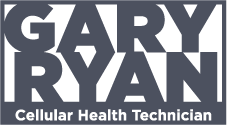Americans awakening to the usefulness of pulsed electromagnetic therapy probably believe PEMF is an invention about the age of the iPad or the cell phone. But the magnetic portion of the equation goes back centuries, while the “electro” of it existed almost from the dawning of alternating current and the first hydro-electric power plant at Niagara Falls, New York.
Why are you just now hearing about it?
The naming of the electric car has resurrected the inventive genius of Nikola Tesla, who immigrated to New York from Serbia in 1884 to work for Thomas Edison. The two would soon become rivals, arguing the efficacy of direct current (Edison) as opposed to alternating current (Tesla, or as a business entity, George Westinghouse) for use by public utilities.
In an effort to demonstrate the dangers of Tesla’s alternating current, Edison filmed electrocutions of elephants and humans using AC. Any search of “Tesla Edison” on Youtube will turn up numerous renditions of their clash.
“To counter these claims,” reports the website Teslamania.tv, “Tesla created healing frequency machines and personally demonstrated that AC electricity could be used to cure almost any disease. Tesla provided audiences of electricians stunning demonstrations that showed high frequency current flowing safely through his body.”
From this came the patented “Tesla Coil” that used oscillating alternating electromagnetic fields at various frequencies. Tesla formed the Electrotherapeutic Society in 1890, and his early machines were know as pulse diathermy devices.
From accounts online it looks as if Tesla’s basic technology traveled a rocky road with the American Medical Association, culminating with congressional hearings in 1963 that branded the technology quackery. This was about three years after the pharmaceutical industry provided the most prescribed drug in history — valium. But elsewhere across the globe, from the Soviet block to the German-speaking nations of Europe, most hospitals and clinics offered some form of Tesla’s technology.
In the mid-1970s a physics and mathematics professor in Greece, Panos T. Pappas, redeveloped Tesla’s basic machine, calling it the PAP Ion Magnetic Inductor, or PAPIMI, machine. In comparison to what else was available, this machine emitted a far stronger pulse that offered greater cell penetration. Its popularity saturated Europe, while — although it was FDA cleared for bone building in 1979 — only trickling within the U.S.
Other steps toward PEMF utilization in the U.S. included:
• Cleared for postoperative edema and pain (1987)
• Used with FDA blessing as an adjunct to cervical fusion surgery (2004)
• Therapy for depressed individuals unresponsive to medication (2011)
• Employed by NASA for restoring bone and muscle density on astronauts returning from space.
The emergence of the Internet prompted foreign manufactures to translate websites into English further popularizing PEMF in the U.S.
The machines we use descended from the first version of PEMF operated by a microprocessor (instead of a mechanical spark gap). Manufactured by Pulse Centers, these machines provide us a voltage range from high to low and also adjustable intensity. Additionally, we have ports for two body-part applicators to be used simultaneously.
So, if you think PEMF is an idea untested by time, it may really be a device whose time has finally come.


